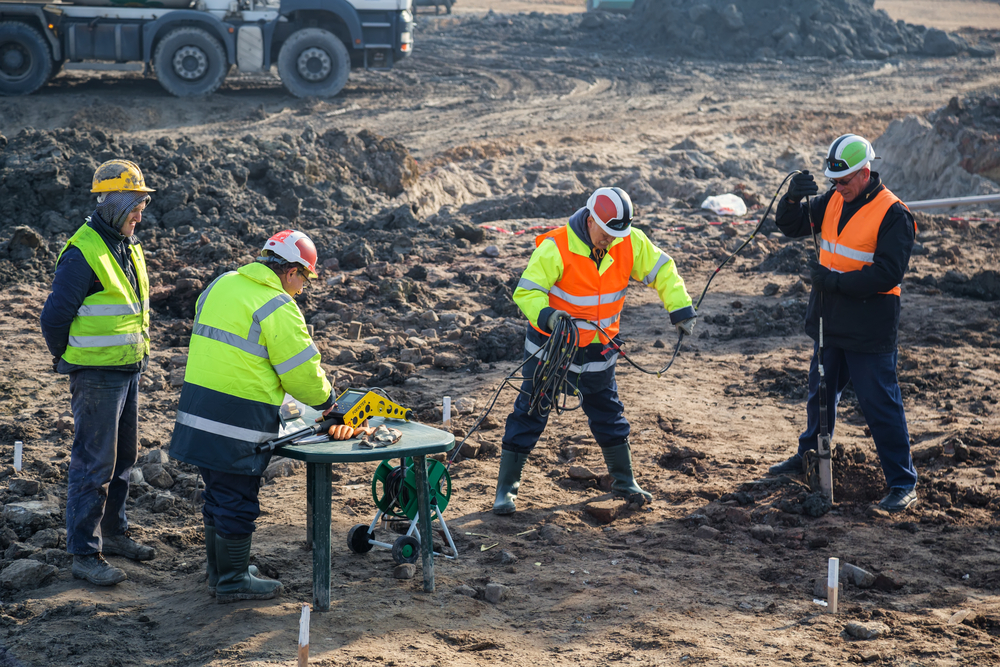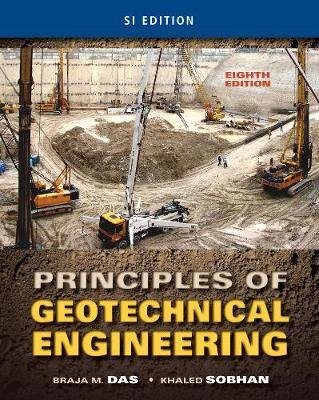Why All About Geotechnical Engineering Matters in Today's Framework Growth
Why All About Geotechnical Engineering Matters in Today's Framework Growth
Blog Article
The Relevance of Geotechnical Engineering in Dealing With Environmental Challenges and Enhancing Building And Construction Security
Geotechnical design serves as a cornerstone in the intersection of environmental stewardship and building safety, offering critical insights into the behavior of dirt and rock under numerous problems. By implementing calculated website examinations and tailored mitigation measures, geotechnical designers play an essential duty in safeguarding both human lives and ecological honesty.

Role of Geotechnical Engineering
Geotechnical design plays an important role in the style and building and construction of facilities by dealing with the actions of dirt and rock products under various conditions. This field of design is crucial for comprehending the interaction in between frameworks and the ground, that includes identifying the load-bearing capacity of soil, assessing security, and forecasting prospective negotiation or failure.
Geotechnical engineers are accountable for carrying out site examinations, which include sampling and screening dirt and rock to gather information on their chemical and physical residential properties. This info is important for designing structures, keeping walls, and other earth-retaining frameworks that guarantee safety and security and durability. Additionally, geotechnical design educates the choice of suitable construction approaches and materials, thereby minimizing threats connected with soil behavior.
In addition, the combination of geotechnical design principles right into urban preparation and environmental monitoring is important for resolving difficulties such as ground contamination and groundwater monitoring. By understanding geotechnical factors, designers can create sustainable options that enhance the durability of framework against all-natural risks, while additionally promoting environmental stewardship. Inevitably, the role of geotechnical engineering is essential for attaining safe, resilient, and eco mindful building and construction practices.
Dirt Erosion Reduction
Dirt erosion presents a substantial risk to both environmental security and framework integrity, affecting approximately 24 billion lots of fertile soil shed annually worldwide. This phenomenon is worsened by aspects such as logging, urbanization, and poor farming methods. Geotechnical design plays a pivotal role in developing effective soil erosion mitigation approaches that guard both the atmosphere and building and construction projects.
One technique requires the execution of disintegration control approaches such as plants growing, which stabilizes soil with root systems. Additionally, the building of keeping wall surfaces and terraces can effectively decrease surface drainage and shield at risk areas from disintegration. Proper drain style is additionally essential; it minimizes water buildup and routes excess runoff far from important structures.
Furthermore, geotechnical designers use soil stabilization strategies, such as the application of geotextiles and eco-friendly floor coverings, to improve soil cohesion and avoid degradation - all about geotechnical engineering. Normal monitoring and analysis of erosion-prone sites enable prompt interventions, making certain long-lasting sustainability. By integrating these approaches, geotechnical engineering not just reduces the influences of soil disintegration however also adds to the resilience of framework against ecological difficulties, ultimately promoting a more secure and much more lasting built atmosphere
Groundwater Defense Techniques
Groundwater offers as a vital source for alcohol consumption water, agriculture, and commercial procedures, making its security crucial for environmental sustainability and public health and wellness. Effective groundwater security strategies are vital in mitigating contamination dangers and ensuring the durability of this source.

Normal tracking of groundwater quality is likewise important, allowing very Our site early detection of contamination resources and promoting timely removal initiatives. Employing innovative modern technologies, such as geophysical surveys and remote picking up, aids in recognizing potential hazards to groundwater gets.
Moreover, public education see this website and learning and stakeholder interaction are crucial, promoting community support for groundwater defense initiatives. geotechnical engineer description. By integrating governing measures, technological innovations, and community involvement, we can produce a thorough framework that safeguards groundwater resources while advertising lasting development and building techniques
Landslide Threat Administration
Landslides present substantial threats to both human security and facilities, making reliable threat monitoring techniques necessary. Geotechnical design plays an essential function in determining, analyzing, and mitigating landslide threats. A detailed understanding of slope security, soil technicians, and hydrology is important for creating effective danger administration strategies.
The initial action in landslide threat monitoring entails extensive website examinations, which consist of geological mapping and dirt testing. These investigations assist engineers assess the capacity for landslides by determining important variables such as incline angles, dirt make-up, and water material. Using advanced technologies such as remote picking up and geophysical surveys can enhance the precision of these evaluations.
When risks are determined, appropriate mitigation procedures can be carried out. These might consist of engineering solutions such as retaining wall surfaces, drain systems, and slope stablizing strategies. In addition, monitoring systems should be developed to find indications of ground movement and adjustments in water levels, permitting aggressive treatments.

Enhancing Building Security
Building websites often present a myriad of hazards that can jeopardize worker safety and security and task honesty. Geotechnical design plays a critical role in enhancing construction safety and security by giving crucial understandings into subsurface conditions. Via comprehensive dirt and rock analysis, geotechnical engineers can identify possible dangers, such as soil instability, groundwater issues, and seismic vulnerabilities, which may compromise the safety of building and construction tasks.
Carrying out geotechnical services, such as proper structure style and using retaining frameworks, alleviates these risks considerably. These remedies not just guarantee the security of the structures being built yet also develop a much safer working environment for building and construction workers. In addition, extensive surveillance and evaluation of site conditions throughout the construction procedure are crucial. Making use of innovative modern technologies like ground-penetrating radar and inclinometer systems enables real-time data collection, permitting for prompt interventions when threats are found.
Furthermore, promoting a society of safety with training and adherence to developed safety and security methods better boosts building and construction site safety. By incorporating geotechnical competence right into the preparation and implementation stages, construction projects can achieve higher safety and security standards, ultimately protecting workers and ensuring successful task conclusion.
Verdict
In conclusion, geotechnical design offers as a critical technique in taking on ecological obstacles and advertising building and construction safety and security. Via reliable soil erosion reduction, groundwater defense methods, and landslide threat monitoring, geotechnical designers add to the development of resistant facilities. The integration of these techniques cultivates a much safer construction setting and boosts the sustainability of civil design tasks. Inevitably, the know-how of geotechnical designers is essential in securing both natural deposits and human lives against prospective threats.
Geotechnical design offers as a keystone in the crossway of environmental stewardship and building and construction security, providing important insights right into the actions of dirt and rock under various conditions. Geotechnical design informs the option of suitable construction approaches and products, consequently reducing threats connected with soil habits.
Geotechnical engineering plays a pivotal role click for more in developing effective soil disintegration mitigation strategies that secure both the environment and building tasks.
In addition, geotechnical engineers employ soil stabilization methods, such as the application of geotextiles and eco-friendly mats, to improve dirt communication and protect against destruction. Via extensive soil and rock analysis, geotechnical engineers can determine possible dangers, such as soil instability, groundwater concerns, and seismic susceptabilities, which may compromise the security of building activities.
Report this page